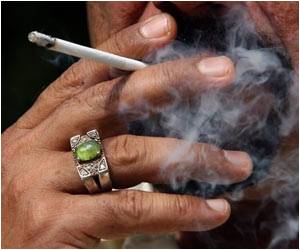
‘Approximately 61 million Indian adult men smoked cigarettes (40 million exclusively) and 69 million smoked bidis (48 million exclusively).’
Tweet it Now
Study author Dr. Prabhat Jha has urged the Indian government to increase tobacco taxes in its Feb. 29 budget. Previous research by Dr. Jha, director of the Centre for Global Health Research of St. Michael's Hospital, has shown that raising the tax on tobacco is the single most effective intervention to lower smoking rates and to deter future smokers. China is the only country in the world with more smokers than India. In both countries, tobacco taxes have not kept pace with the increased affordability of cigarettes. In 2010 smoking caused about 1 million deaths or 10 percent of all deaths in India, with about 70 percent of those deaths occurring between the ages of 30 and 69, what should be the prime of their lives, said Dr. Jha.
The study found the number of men smoking any type of tobacco at ages 15-69 years rose by about 29 million, or 36 percent, from 79 million in 1998 to 108 million in 2015, representing an average annual increase of about 1.7 million male smokers. The overall age adjusted smoking prevalence at ages 15-69 years declined modestly from 27 percent in 1998 to 24 percent in 2010 but total numbers rose due to population growth.
Smoking cessation is uncommon in India. In 2015, at ages 45-59 years, there are roughly four current smokers for every quitter. By contrast, in North America, where smoking cessation is now common, there are more quitters than current smokers at these ages. The study also found that the sharpest increase in male smoking occurred at ages 15-29 years. The highest prevalence of any smoking in men aged 15-69 years was in illiterate men in both 1998 and 2010.
Among illiterate men, the prevalence of cigarette smoking rose most sharply, by about 3.6 times. By contrast, among men with Grade 10 or more education, the prevalence of bidi or any smoking fell, but still rose modestly for cigarettes. The research shows that the number of smokers rose about 68 per cent from 19 to 31 million in urban India and about 26 percent from 61 to 77 million in rural India.
Advertisement
Source-ANI










